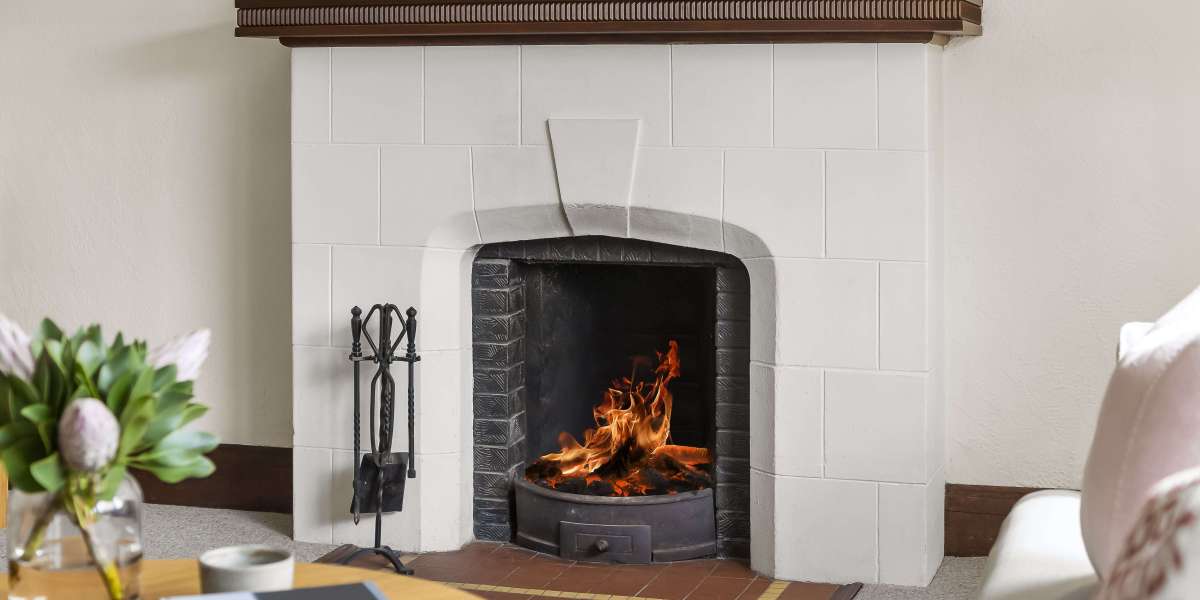 Wood stoves, unlike traditional open fireplaces, are designed to burn wood. This allows them to meet stricter emission regulations.
Wood stoves, unlike traditional open fireplaces, are designed to burn wood. This allows them to meet stricter emission regulations.Wood burning stoves create glowing yellow flames that dance and warm crackling noises. They also provide warmth and a warm sensation. However the smoke they release includes carbon monoxide and harmful air pollutants such as benzene, formaldehyde and polycyclic aromatic hydrocarbons.
Efficient
Fireplaces and stoves that burn wood provide a beautiful and natural heat source to the home, and they are incredibly efficient. A top-quality wood burner could be eco-friendly up to 77 percent. With the increasing cost of energy, it is important to ensure that you're getting the maximum value from your log stove The good news is that it's much easier than ever before!
One of the most important factors in the effectiveness of a wood burning stove is is the water content of the wood. We recommend using only dried and seasoned wood that has dried over a period of at least one year and in some cases, two years. The more dry the wood and the more efficient it is to burn. This means less smoke and less harmful emissions.
A wood-burning stove also is a low-carbon fuel source, which is great for the environment. Additionally, by purchasing locally-sourced firewood, you are aiding in the active management of woodlands which is a good thing for wildlife.
As far as maintenance is involved, the sole requirement for a wood stove is to frequently remove and scoop up the ash. It can be a bit of a hassle however it is worth it to get the best heat from every log. In addition when you wait for a couple of days until the ashes completely cool, they can be reused to make an eco-friendly and non-toxic ice melt. They can be used to polish jewelry and also absorb odors.
A wood-burning fireplace is an old-fashioned classic. Although they're not as popular than gas fires however, there's no denying the beauty and appeal of a warm log fire. They're great for snuggling up to on cold nights and are an ideal method of creating an inviting and warm space within your home. Invest in a quality wood stove and you'll start reaping the benefits for many years to be! Call us today to learn more about how our skilled chimney sweeps can help you get the best out of your stove.
Low Carbon
Burners that are clean and efficient are among the best ways to save money on logs and keep your home warm. They also support local woodland management. This is an excellent way to support wildlife in your local area.
Wood-burning fireplaces and stoves create minimal pollution when they are properly maintained and used with dry, seasoned and dry firewood. If they aren't properly maintained or use wood of poor quality the smoke produced is a result of fine particles, commonly referred to as particulate pollution that can cause irritation to lung organs and other body organs. It also contains carbon monoxide as well as toxic air pollutants like formaldehyde, benzene and polycyclic aromatic hydrocarbons. Inhaling these types of air pollution could cause lung irritation as well as wheezing, coughing, and asthma attacks. It can even lead to serious health conditions such as cancer, heart disease, or premature death.
Many people are concerned that using a wood-burning stove could contribute to climate change however this isn't necessarily true. Wood burning produces energy that is carbon-neutral. The tree absorbs carbon dioxide over its lifespan. After burning carbon dioxide is released into the air.
Since the wood is sourced locally, this reduces the amount of pollutants released when it is transported. It is essential to select hardwoods that are seasoned and of high quality. They will burn longer and more evenly than softwoods.
Modern wood stoves, such as those manufactured by Charlton & Jenrick, emit much less pollution than older stoves. They have been tested and certified to meet the 2020 EPA standards which are much more stringent than previous emissions limits.
To prevent a build-up of exhaust inside your home, all wood burning stoves should be vented fully to the outside. By keeping the flames away from the logs and making sure you make use of dry, seasoned wood, all of our current clean burn and DEFRA exempt stoves are capable of producing extremely clear exhaust and have particulate levels that are 60 or more lower than the DEFRA limit.
A wood-burning stove that has a catalytic converter or a hybrid unit can provide the best low-carbon solution for heating. These units re-ignite gasses and particles that were ignited during the initial combustion in a second phase by mixing them superheated air. They then funnel the remaining particulates and gasses through a catalytic combustor for an additional and final combustion, reducing emissions to a level that is well below the government standards.
Clean Burn
Cleanburn wood stoves are made to burn fuel with the best efficiency possible. This results in the emission of very small particles into air when burning wood. The stove's air management system regulates the intake and exhausting of gases, making sure that the combustion process occurs in a closed, controlled environment. It also regulates the flame's height to minimize emissions and increase heat output.
This means your chimney and surrounding area will be cleaner than older stoves. Particulate matter, also referred to as particle pollution, is a result of incompletely burned wood can trigger respiratory problems, such as wheezing and coughing, and contribute to heart diseases, stroke, diabetes, and other serious conditions. Wood burning is also a contributor to poor air quality in cities.
Smoke from poorly combusted timber has fine particulate pollution and hazardous air pollutant such as carbon monoxide and other hazardous air pollutants such as nitrogen oxides as well as volatile organic compounds (VOCs), benzene and formaldehyde. These particles can penetrate deep into the lung and other organs and cause discomfort, damage and even death. Dust particles from the air can also damage the surfaces in your home and create a gritty feel to rooms.
If you're using a fireplace with wood burning, it's important to only make use of high-quality firewood that has been properly seasoned and dried. The most efficient woods for heating are hardwoods, such as beech, oak and ash. Hardwoods are dense and BTU content and they provide more heat than softwoods.
Contact your local authority to see whether they have rules about wood burning. These may include rules regarding odors or nuisances and visible emissions or smoke opacity restrictions.
It is crucial to keep the glass of a stove with glass fronts free of grime and deposits. This can be done using a dry cloth or oven cleaner spray. You can also add bicarbonate soda and water to the glass.
Regular maintenance is crucial for your chimney and stove. This includes regular chimney cleanings to remove creosote as well as ensure proper functioning of the flue. Also, make sure you mark dates for regular inspections in your calendar, as this will help you avoid costly repairs and extend the life of your wood burner.
Low Maintenance
Wood burning fireplaces are very popular because they offer natural warmth. However, this kind of fire requires some care and maintenance. The chimney, flue, and stove can all be the cause of house fires if they are not cleaned and maintained regularly. They also provide warmth in the event of an electrical outage, particularly during winter storms, when branches of trees may fall and power lines could be damaged.
When you use a wood stove to heat your home, you will reduce your carbon footprint when compared to other fossil sources of energy like gas. Modern wood stoves and inserts are designed to comply with EPA (Environmental Protection Agency) standards, which means that they produce very low emissions. The more well-seasoned wood you use the more efficient your stove will be. You'll require less wood to get the same amount of heat.
The fireplaces require some care and maintenance. They should be placed away from materials that ignite and have a screen. Air flow will be improved by keeping the grate clear of ash and other debris. This will help keep the fire burning longer and your home in good order. It is recommended that your stove and chimney swept every year at least two times to avoid creosote accumulation, which can be an extremely dangerous fire hazard as well as a clog that can restrict circulation.
It may take some time for a new homeowner to master the art of to ignite, light and maintain a continuous fire in the fireplace. However, once you have mastered the art of building and maintaining an open flame in your wood burner, it can be a source of lasting enjoyment that provides heat and warmth for your home every year.
Wood burning fireplaces have been around in a variety of forms for over 500 years and they've regained popularity due to their effectiveness and sustainability, as well as the natural warmth and scent of real wood. If you're considering installing a new heater, speak with your local certified Regency dealer to find out more about the benefits of an insert or stove made of wood for your home.






